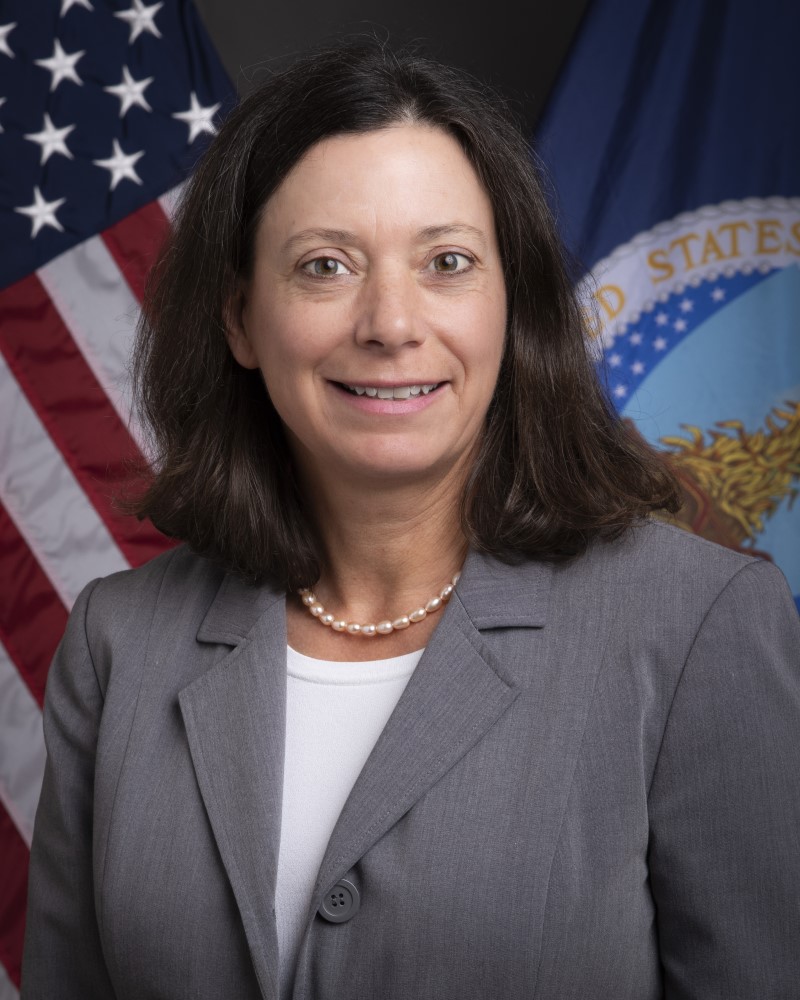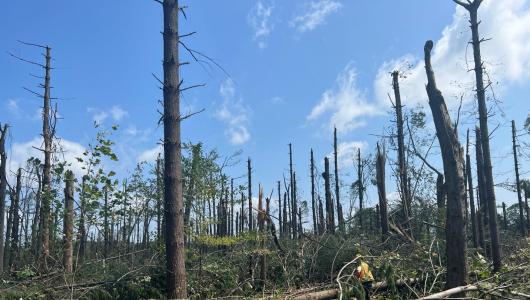The USDA’s Animal and Plant Health Inspection Service (APHIS) has confirmed the detection of Highly Pathogenic Avian Influenza, subtype H5N1, in dairy cattle in 12 states. To protect our livestock industry from the threat posed by H5N1, USDA is taking a number of actions with our federal partners—one of them being a significant update to the Emergency Assistance for Livestock, Honeybees, and Farm-raised Fish Program (ELAP).
Those of you who incur milk losses in their dairy herds due to H5N1 can now apply for financial assistance through ELAP. USDA’s Farm Service Agency (FSA) expanded ELAP policy through the rule-making process; this expansion assists with financial losses resulting from reduced milk production when cows are removed from commercial milking in dairy herds with a confirmed positive H5N1 test. Positive tests must be confirmed through APHIS’s National Veterinary Services Laboratories (NVSL).
So, in this Ask the Expert, Dr. Julie Gauthier – Executive Director of Veterinary Services’ Field Operations and Policy Liaison for the dairy cattle HPAI response, answers questions about H5N1 in the United States, its current effects in our dairy industry, and the process and importance of testing your cows to help protect them, your operation, and the dairy industry as a whole.

What is Highly Pathogenic Avian Influenza (HPAI) H5N1 infection in Dairy Cattle?
Highly pathogenic avian influenza (HPAI) is a contagious viral disease of domestic poultry and wild birds. HPAI is deadly to domestic poultry and can wipe out entire flocks within a matter of days. HPAI is a threat to the poultry industry, animal health, trade, and the economy. An H5N1 strain of HPAI has affected wild and domestic birds in the United States since 2022. This same strain of H5N1 was first detected in dairy cattle in the United States in March 2024. Since that time, USDA has worked with states and producers to detect and investigate cases of H5N1 in cattle to learn more about the virus and how it is spreading. H5N1 causes less severe illness in cattle than in domestic birds, with most cattle recovering after supportive care. However, the disease remains of concern for all livestock and also for humans who come into contact with infected animals. USDA remains committed to learning more about this virus, and supporting producers that are impacted by it.
How are the tests for H5N1 in dairy herds administered? Do I conduct the test or does someone else?
In order to continue to monitor and understand the extent of this virus and reduce the risk of further spread of H5N1, APHIS issued a Federal Order, effective April 29, 2024, that requires pre-movement testing for lactating dairy cattle moving interstate and reporting of positive test results from all laboratories and state animal health officials.
While interstate movement testing of lactating dairy cattle is required per the Federal Order, producers and veterinarians may choose to participate in the HPAI Dairy Herd Status Program, as an alternative, or to conduct additional testing to manage HPAI suspect herds or better understand the health status of their herd. The HPAI Dairy Herd Status Program offers alternatives to the premovement testing and streamlined sample collection, from the bulk milk tank rather than individual cows. Regardless of which testing route producers chose, APHIS will provide financial support for the costs of NAHLN testing and sample shipping, through producer support programs; interested producers can contact their APHIS AVIC for more details.
USDA encourages individuals to work with their herd veterinarians to report cases of sick cattle or other animals with signs compatible with HPAI to State Animal Health Officials (SAHO) and their APHIS Veterinary Services Area Veterinarian in Charge (AVIC).
What is the impact to my dairy operation if any of my cows test positive for H5N1?
Isolate any sick cattle from the rest of your herd and closely monitor for other sick animals. Provide supportive care, as cattle have been recovering well, and divert or destroy milk from sick animals. Work closely with your SAHO and AVIC to provide epidemiological data to help understand the disease better, and to move through the herd clearance process. In general, herds are eligible for clearance when cattle show no clinical signs and undergone a 30-day waiting period or two negative weekly tests.
Producers should work closely with their SAHO and AVIC to ensure they are aware of options for financial support for veterinary care, heat treatment for milk disposal, personal protective equipment and emergency assistance programs.
Is HPAI in dairy cattle a food safety or human health issue?
The U.S. Food and Drug Administration (FDA) and USDA are confident that the food supply is safe. The pasteurization process and diversion/destruction of milk from sick cows ensures the safety of the nation’s treated commercial milk supply. The federal-state milk safety system for commercial milk, and the Grade “A” Pasteurized Milk Ordinance, have proven effective for decades against a wide range of pathogens. USDA has a rigorous meat inspection process, which includes Food Safety and Inspection Service (FSIS) veterinarians who are present at all federal livestock slaughter facilities. FSIS has a comprehensive approach to identifying systemic disease in animals and ensuring the safety of the food supply.
FDA has additional information about food safety on its website.
The U.S. Centers for Disease Control and Prevention (CDC) believes the current risk to the general public from bird flu viruses remains low. People who have job-related or recreational exposure to infected birds or animals, including cows, are at greater risk of contracting HPAI A(H5N1) virus.
What can dairy producers do to prevent H5N1 in their herds?
Biosecurity is the key to containing and eliminating this virus. Good biosecurity – including cleaning and disinfection of vehicles and equipment – is critical to minimizing the risk of disease spread. USDA works closely with state animal health officials, producers, and industry organizations to provide biosecurity guidance and resources not only on affected farms but for all livestock producers as a part of practicing good biosecurity.
APHIS has made available a number of biosecurity documents on its landing page.
Do I or anyone working at the dairy need to take personal safety precautions?
APHIS has shared a list of minimum recommendations for appropriate personal protective equipment to wear and biosecurity procedures to follow for anyone who will be in contact with an HPAI (H5N1) affected herd. CDC also has many resources for personal safety precautions on its website including Protecting Yourself from H5N1 When Working With Farm Animals, Reducing Risk for People Working with or Exposed to Animals, and Considerations and Information for Fair Exhibitors to Help Prevent Influenza.
A full list of CDC’s public health materials related to H5N1 is available on its website.
Dr. Julie Gauthier is Executive Director of Veterinary Services’ Field Operations for APHIS. She can be reached at julie.gauthier@usda.gov.


